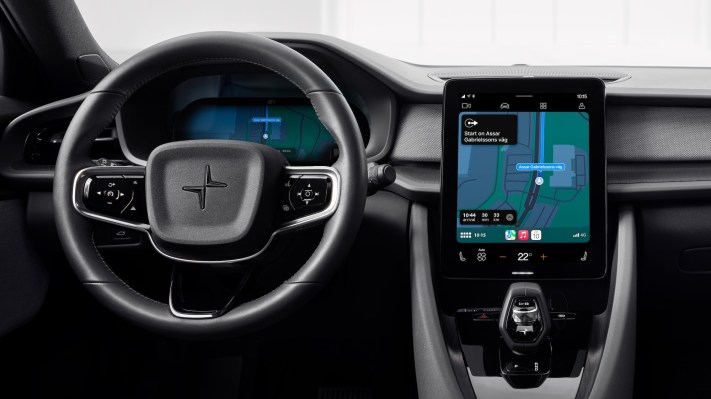
Polestar CEO Thomas Ingenlath is pleased with the integration of Google built-in, a product that incorporates Google apps and services directly into the company’s EVs. However, the EV maker won’t be dropping Android Auto or Apple CarPlay as a result.
At CES 2024, Ingenlath committed to sticking with Android Auto and Apple CarPlay, middleware that enables drivers to project their smartphone onto the car’s infotainment display. He went on to question automakers that have decided not to make certain models compatible with these platforms, such as GM’s decision for the new 2024 Chevy Blazer EV.
“It’s still too important for our customers to have the choice,” Ingenlath said during an interview at CES 2024. He later added that, in his view, removing the option isn’t the right way of treating customers.
Despite its championing of Google built-in, Polestar’s willingness to keep Android Auto and Apple CarPlay is notable because it illustrates the complexity of meeting customer preferences, even if it overshadows the native technology in the vehicle.
The “Google built-in” product is powered by the tech company’s Android Automotive operating system, integrating Google automotive services directly into the vehicle. Volvo and Polestar were among the first automakers to feature Google’s Android Automotive OS with Google built-in when it launched in 2019. As a result, the Polestar 2 and select Volvo Cars are often the first vehicles to receive new apps and features.
Meanwhile, Android Auto and Apple CarPlay is a secondary interface that runs on the user’s phone and wirelessly communicates with the vehicle’s infotainment system. They have been critical for automakers that have failed to offer the same features and functions as those available on smartphones.
Ingenlath seems convinced that as Google built-in improves and continues to add apps and services, consumers will give up Android Auto or Apple CarPlay on their own. And the updates keep coming. At CES 2024, Polestar announced that the Chrome browser would start rolling out to Polestar 2 in beta, allowing drivers to surf the internet via the central vehicle display while parked.



